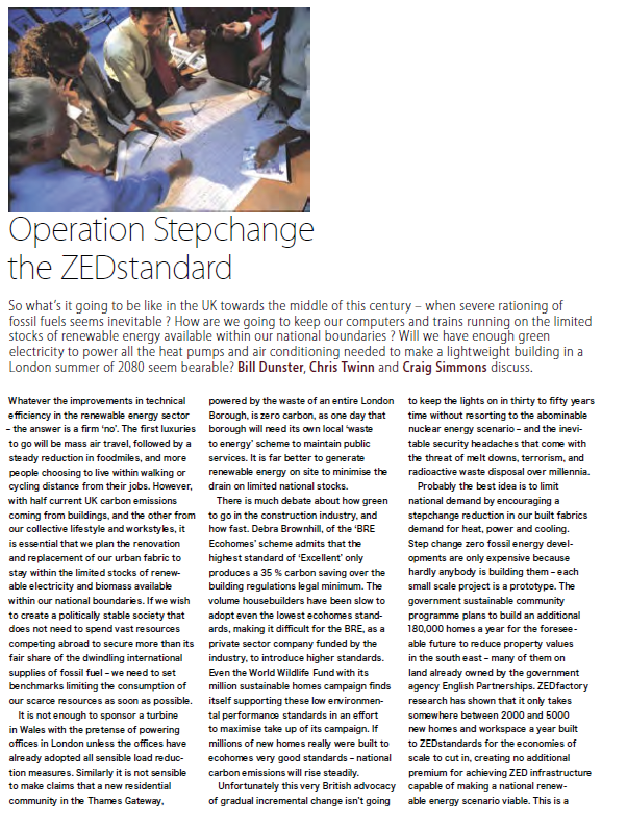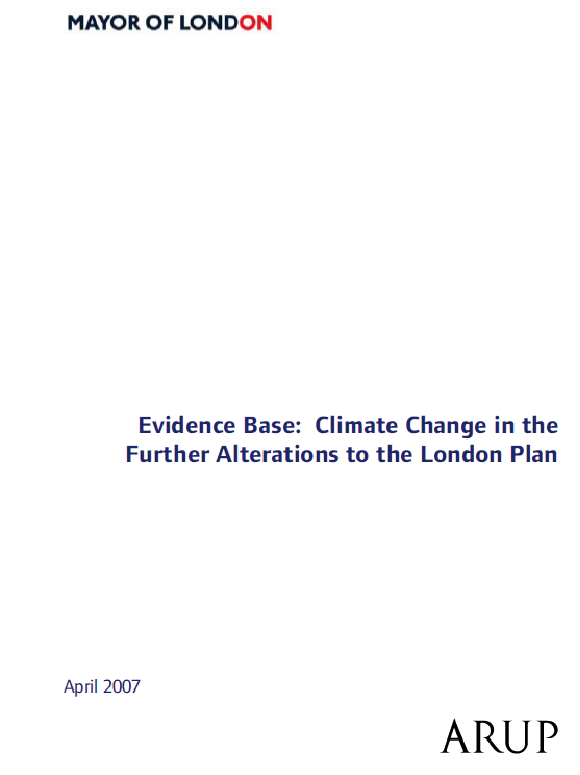Hi Aubrey,
I endorse the GCI submission to the UN Climate negotiators.
Kind regards
Chris
Chris Twinn
FRSA HonFRIBA FCIBSE MEI CEng BSc(Hons)
Arup Fellow | Director | Senior Sustainability Consultant
Arup
39F Huai Hai Plaza 1045 Huai Hai (Middle) Road
Shanghai 200031 China
Building now for the day after tomorrow
So what’s it going to be like in the UK towards the middle of this century ‒ when severe rationing of fossil fuels seems inevitable ? How are we going to keep our computers and trains running on the limited stocks of renewable energy available within our national boundaries ? Will we have enough green electricity to power all the heat pumps and air conditioning needed to make a lightweight building in a London summer of 2080 seem bearable?Bill Dunster, Chris Twinn and Craig Simmons discuss.Not only must greenhouse gas emissions be managed, but also the demand for energy which, in the UK, has increased by 13% in last 30 years.
~~~~~~~~~~~~~~~~~~~~~~~~~~
The Government’s Energy White Paper clearly sets out the challenge. The UK’s carbon dioxide emissions must be reduced by 60% before 2050 to mitigate the worst effects of climate change. If one takes a more precautionary approach to atmospheric CO2 concentrations, and accepts the principle of allowing poorer countries to produce, then so-called contraction and convergence models indicate we will need to reduce UK emissions still further and more rapidly, to about 30% of current levels by 2030.
‘How we can save the planet’ Mayer Hillman and Tina Fawcett Pub: Penguin 2004.
For more on contraction and convergence check out the Global Commons Institute~~~~~~~~~~~~~~~~~~~~~~~~~~
The purpose of the Mayor’s Climate Change Action Plan is to “set out an aggressive agenda for London to play its part in averting catastrophic climate change by ambitiously cutting our own carbon dioxide emissions. The Mayor supports the broad view that this should be achieved through a process of ‘contraction and convergence’ - with the largest industrialised nations that have caused climate change required to significantly reduce their emissions, while newly developing nations are permitted to increase emissions up to a point where emissions converge and stabilise at a level which avoids catastrophic climate change.”
In 2000, the Royal Commission on Environmental Pollution pressed the Government to
respond to the challenge of climate change ("Energy - The Changing Climate", June 2000).
It said: -The goal of reducing the UK’s annual carbon dioxide emissions by 20% from their 1990 level by 2010 is a major step in the right direction. It should become a firm target and the government should produce a climate change programme that will ensure it is achieved. The UK should continue to play a forceful leading role in international negotiations to combat climate change, both in its own right and through the European Union. The government should press for further reductions in the greenhouse gas emissions of developed nations after 2012, and controls on the emissions of developing nations. The government should press for a future global climate agreement based on the contraction and convergence approach, combined with international trading in emission permits. Together, these offer the best long-term prospect of securing equity, economy and international consensus. While UK carbon dioxide emissions are falling at the moment, they are expected to begin rising again. All but one of the nuclear power stations, the main source of carbon-free energy at present, are expected to close by 2025.
The government should set out, within the next five years, a programme for energy demand reductions and development of alternative energy sources that will prevent this from causing an increase in UK emissions. The government should now adopt a strategy which puts the UK on a path to reducing carbon dioxide emissions by some 60% from current levels by about 2050. This would be in line with a global agreement based on contraction and convergence which set an upper limit for the carbon dioxide concentration in the atmosphere of some 550 ppmv and a convergence date of 2050.
C&C Campaigns
Why not Follow @aubreygci
Why not
Tweet
this?



